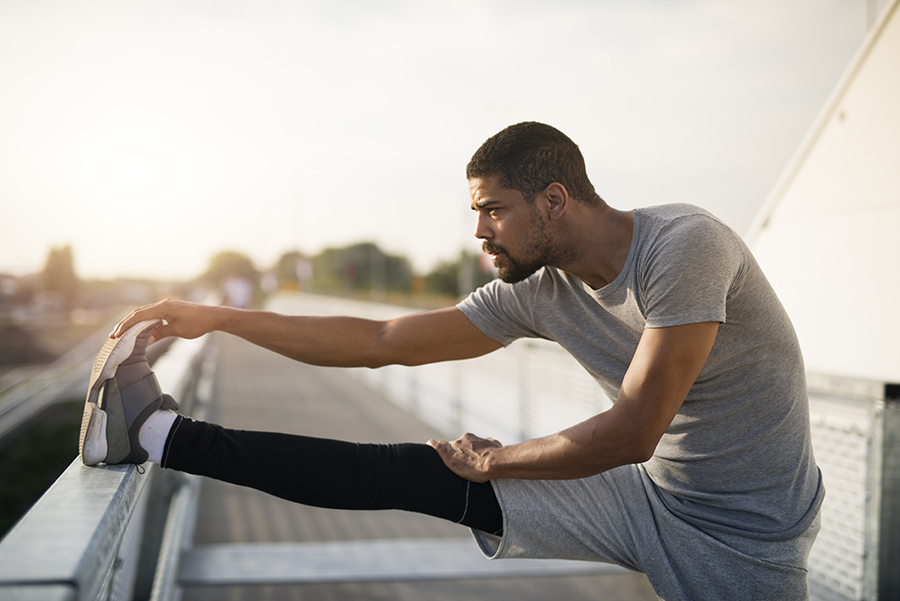Stretching Explained: Why It Deserves More of Your Time
We’ve all heard it before: “Make sure you stretch!” But why is stretching so frequently emphasised, and what exactly does it entail? In today’s fast-paced world, our bodies are becoming increasingly static. The modern lifestyle, characterised by prolonged periods of sitting, has led us to spend an average of 6 hours a day in a seated position. This sedentary behaviour is far from what our bodies were designed for. As a result, stretching isn’t just a recommendation; it’s a necessity. It’s the antidote to the stiffness and immobility that come with our contemporary routines. Stretching is the key to rejuvenating our bodies, making them more agile, healthy, and vibrant.
Why Should You Stretch?
- Enhancing Flexibility and Range of Motion: Our muscles and tendons are like elastic bands. The more we stretch them, the more flexible they become. This increased flexibility allows for a greater range of motion in our joints, making daily activities easier and more fluid.
- Reducing the Risk of Everyday Injuries: A body that’s regularly stretched is less prone to injuries. Tight muscles can lead to imbalances, increasing the likelihood of strains and sprains. By stretching, we can maintain muscle balance.
- Improving Posture and Alignment: Hours of sitting can lead to a hunched posture, with rounded shoulders and a forward-leaning neck. Stretching, especially of the chest and hip flexors, can counteract this posture, promoting a straighter spine and better overall alignment.
- Boosting Circulation and Relieving Muscle Tension: Stretching promotes blood flow to the muscles. This increased circulation brings fresh oxygen and nutrients to muscle cells, aiding in recovery and reducing muscle soreness. Moreover, stretching helps release muscle tension, providing relief from the stiffness that often accompanies long hours of sitting.
Stretching Before and/or After Physical Activity
Stretching has long been a staple of physical routines, but recent research has sparked a debate about when it’s most beneficial to stretch: before or after exercise. Let’s delve into the findings.
Stretching Before Physical Activity: The Role of Warming Up
Traditionally, many believed that stretching before physical activity prepared the muscles for the exertion to come. The idea was that it would increase flexibility, reduce the risk of injury, and improve performance. However, recent studies have challenged this notion.
Studies have shown that stretching before exercise does not significantly reduce muscle soreness or the risk of injury. In fact, some research suggests that static stretching before exercise can temporarily weaken the muscles, potentially reducing athletic performance.
Instead of static stretching, experts now recommend a dynamic warm-up before engaging in physical activity. This involves movements that increase blood flow to the muscles, raise body temperature, and improve flexibility. Examples include leg swings, arm circles, and light jogging. Such a warm-up prepares the body for the demands of exercise without the potential drawbacks of static stretching.
Stretching After Physical Activity
Stretching post-exercise, on the other hand, can aid in recovery and reduce muscle soreness. After physical activity, the muscles are warm and more pliable, making it an ideal time for static stretching. This helps to relax the muscles, increase flexibility, and promote recovery.
Types of Stretching
- Static Stretching: This involves holding a stretch for a set period, usually between 15 to 60 seconds. It’s beneficial for increasing flexibility and is best done post-exercise.
- Dynamic Stretching: These are controlled, gentle movements that aren’t held in an end position. Examples include leg swings and arm circles. It’s ideal as part of a warm-up routine.
- Ballistic Stretching: This uses the momentum of a moving body to stretch. It can be risky if not done correctly, as it might push the muscles beyond their natural range of motion.
- PNF Stretching (Proprioceptive Neuromuscular Facilitation): This method involves contracting and relaxing muscles. It’s often done with a partner and is known to effectively increase flexibility.
What is Assisted Stretching?
Assisted stretching involves the guidance and support of a trained professional, like a sports and remedial massage therapist, to help an individual stretch their muscles beyond what they might achieve independently. The therapist uses their knowledge of human anatomy and biomechanics to apply gentle pressure, enhancing the stretch’s depth and effectiveness. The benefits include:
- Deeper Stretches: With the support of a therapist, stretches can be deepened, accessing muscle groups that might be challenging to stretch independently. This depth can be particularly beneficial for alleviating tightness and improving flexibility.
- Targeted Approach: A sports and remedial massage therapist can tailor the stretching session to address specific activities or dysfunctions.
- Safety and Support: Assisted stretching under the guidance of a trained professional ensures that stretches are performed correctly, minimising the risk of injury.
The Consequences of Neglecting Stretching
Stretching is often sidelined, considered less significant than other physical activities. However, the consequences of overlooking this essential practice can be severe:
- Increased Risk of Injuries: Without regular stretching, muscles become tight and inflexible. This rigidity increases the likelihood of strains and sprains, not just during intense physical activities but even in mundane daily tasks.
- Reduced Flexibility and Joint Mobility: Muscles that aren’t regularly stretched tend to shorten over time. This reduction in length limits joint mobility, making movements stiff and restricted.
- Muscle Imbalances and Poor Posture: When certain muscles become tight, they can pull our joints out of their natural alignment. This misalignment often leads to poor posture, which, over time, can result in chronic discomfort and other musculoskeletal issues.
If you’re reading this and haven’t stretched today, now’s the time to start. The importance of stretching transcends beyond just physical well-being; it’s a cornerstone for overall health. It’s not merely about flexibility but about ensuring every part of your body functions harmoniously. Whether you’re an athlete, a desk worker, or anywhere in between, stretching should be as routine as brushing your teeth. So, make it a daily habit, and embrace a life of improved mobility and reduced pain.
Author: Barrie
